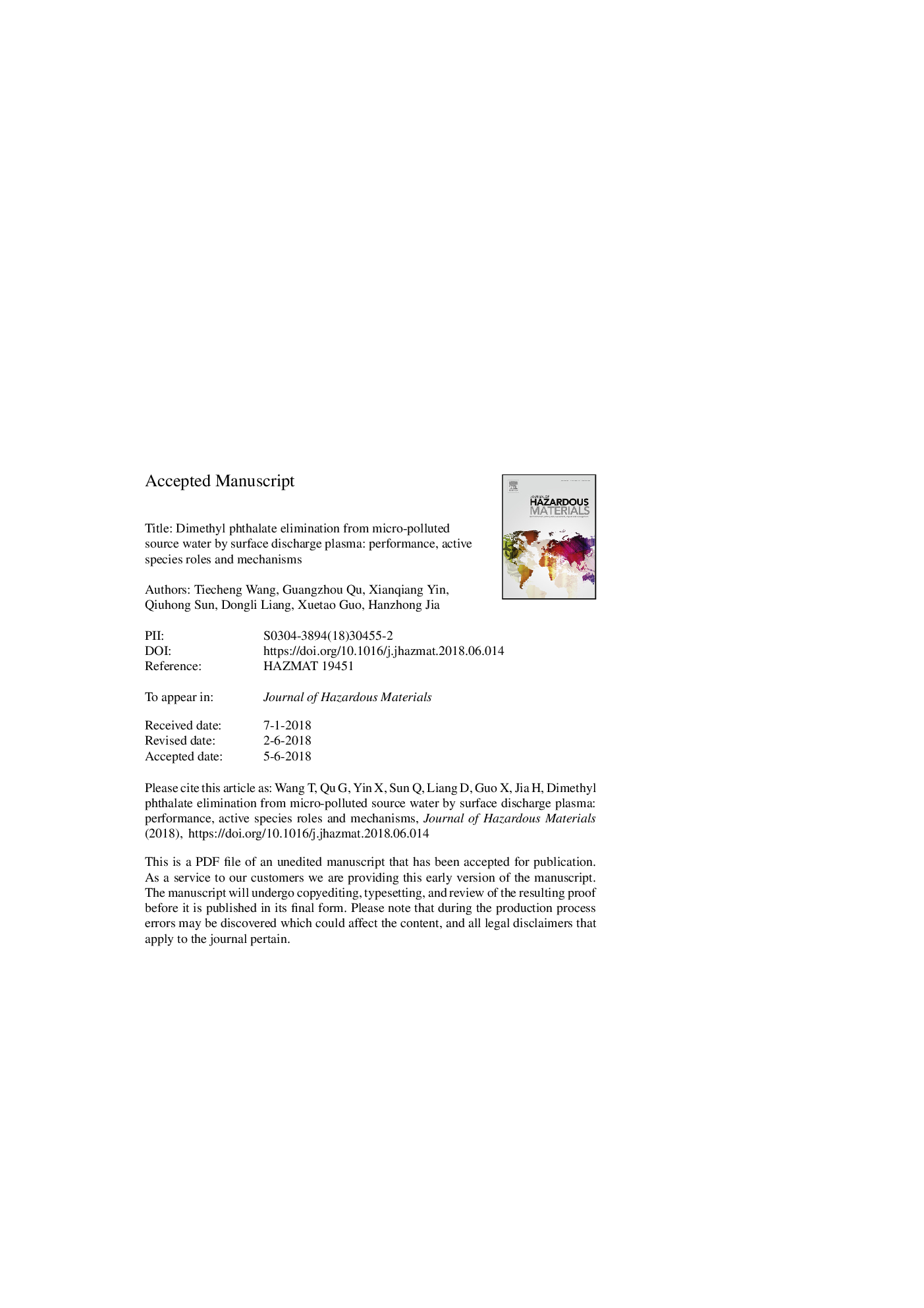| Article ID | Journal | Published Year | Pages | File Type |
|---|---|---|---|---|
| 6968167 | Journal of Hazardous Materials | 2018 | 37 Pages |
Abstract
Plasticizer pollution brought huge risks to ecological environment and human health. Surface discharge plasma (SDP) was employed to eliminate plasticizer in natural water, with dimethyl phthalate (DMP) as a typical plasticizer. Experimental results showed that DMP degradation efficiency reached 82.8% within 60â¯min's SDP treatment, and the elimination process fitted well the first-order kinetic model. Low initial DMP concentration, alkaline condition, and low natural organic matter content were all conducive for DMP degradation. The contributions of OH radical and O2â to DMP elimination were 91.9% and 78.1%, respectively. Total organic carbon (TOC), UV-vis spectroscopy, and atomic force microscopy analysis demonstrated that DMP molecular structure was destroyed after the SDP treatment, and some small molecular fractions were generated. Approximately 47.8% of TOC and 73.5% of COD were eliminated after 60â¯min's SDP treatment. Phthalic acid monomethyl ester, phthalic acid, o-phthalic anhydride, acetic acid, formic acid, and oxalic acid were detected as the byproducts. Carbon balance analysis among these intermediates showed that total carbon content was approximately 4.64â¯Ãâ¯10-2 mmol before treatment, and it was 4.578â¯Ãâ¯10-2 mmol after treatment, suggesting that some C-containing intermediates still existed but not detected. DMP degradation pathways in the SDP system were proposed.
Related Topics
Physical Sciences and Engineering
Chemical Engineering
Chemical Health and Safety
Authors
Tiecheng Wang, Guangzhou Qu, Xianqiang Yin, Qiuhong Sun, Dongli Liang, Xuetao Guo, Hanzhong Jia,
